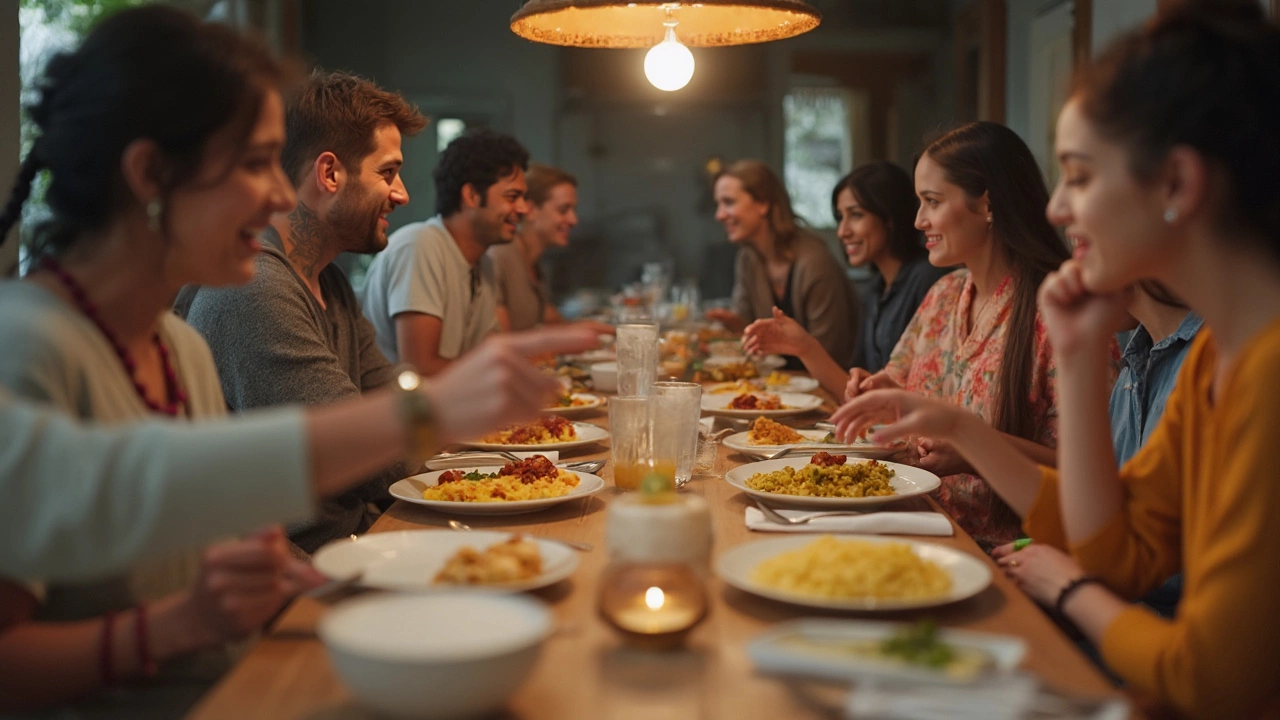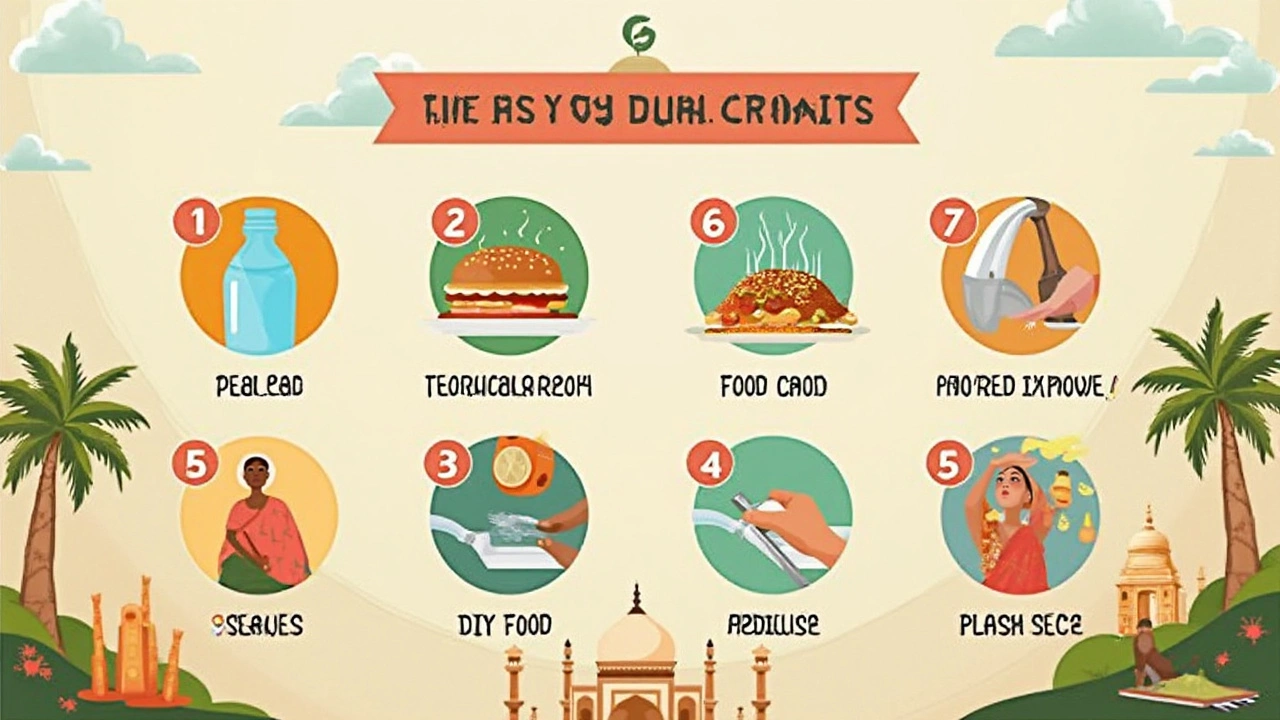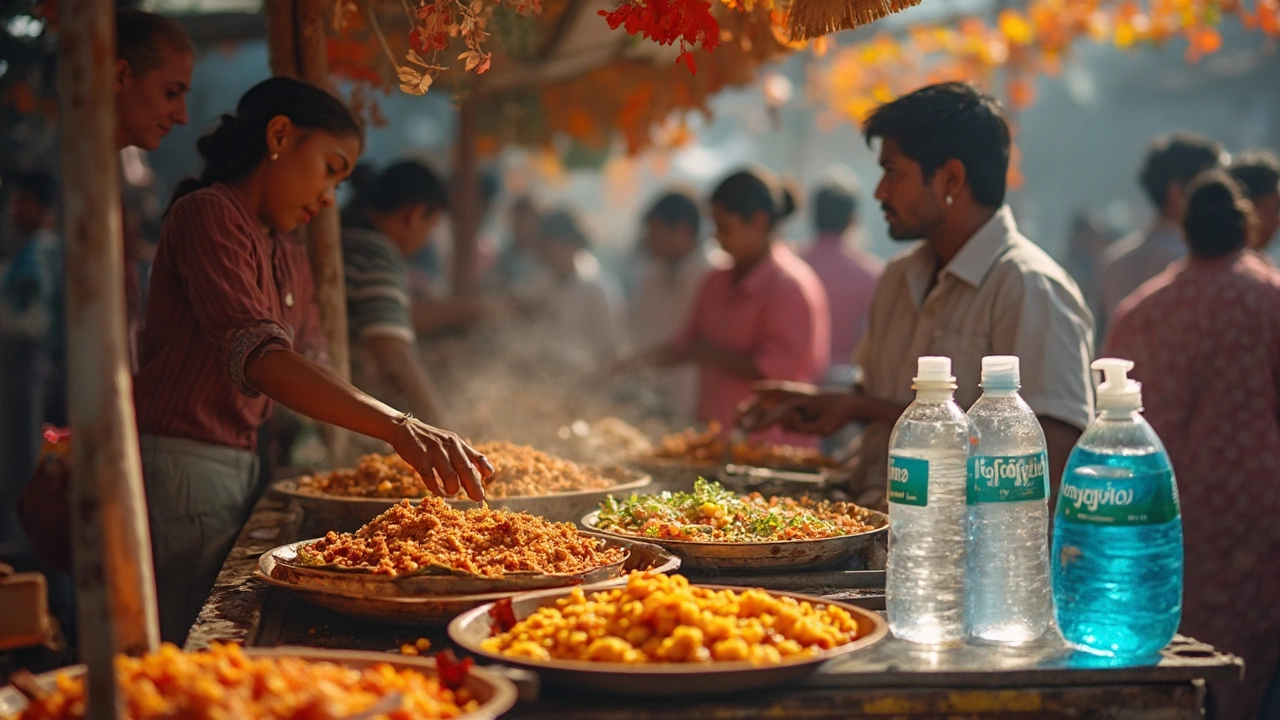Delhi belly is the shadow that follows every traveler's excitement in India. You see the colors and smell the spices, but the nagging worry about sudden stomach growls or running for a bathroom refuses to fade. Stomach issues here aren’t just a travel myth—they're so common that every seasoned backpacker has a “Delhi belly” story to share, from last-minute bus stops in Rajasthan to mad dashes in Mumbai train stations. The intensity of flavors might lure your senses, but one careless bite can trap you in your hotel room for days. And let's not sugarcoat it: you don’t want to spend your bucket-list trip hugging a toilet instead of visiting the Taj Mahal. But escaping a bad stomach in India isn’t pure luck, it’s know-how—a mix of street-smarts, prep, and a dash of boldness when it comes to saying "no, thanks".
Understanding the Risks: Why Stomach Trouble Strikes Travelers
India’s food is legendary for its rich spices, thalis that never seem to end, and street vendors plating up some of the best snacks in the world. But the country’s climate—the heat, the monsoons, the dust—and the fact that bacteria thrive in such settings, make food and water here riskier for the foreign gut. Local immune systems are used to the microbes, but newcomers? Not so much. The World Health Organization states that up to 40% of travelers to South Asia experience acute gastrointestinal (GI) problems. And it’s not just about the famous curries or spice levels; bacteria like E. coli, viruses, and parasites are behind most cases.
Most problems start with contaminated water and food. Fresh produce washed with tap water, drinks containing ice, and undercooked meats are all common culprits. Even street food that looks freshly made can be deceptive if hygiene isn’t up to par. Think about it: a popular chai stall might handle thousands of customers a day, but if water isn’t boiled long enough, or someone skips washing their hands after handling cash, germs sneak right in.
It’s tempting to chalk up your risk to “weak stomachs,” but experts say otherwise. The real difference comes down to local exposure; people living in India have built up partial immunity. Westerners, Aussies, East Asians—most land in India wide-eyed and vulnerable.
One can’t ignore the role of the climate, either. Heat doesn’t just make you sweat; it speeds up bacterial growth, so food that sits for just an hour can become hazardous. Monsoon season from June to September brings heavy rains that overflow drains and flood streets, letting sewage mix with drinking water in some areas. You might not see it, but bacteria are everywhere—on cutlery, plates, veggies, and even your own hands after touching money or railings.
There’s also the simple truth about habits. Travelers, eager to taste everything, often lower their guard. The sight of a bustling crowd at a stall or locals eating with gusto can feel like a seal of approval, but trust your own judgment. Consider that Indians themselves are choosy about where they eat.
Antibiotic resistance makes things trickier too. While a Cipro pill used to rescue travelers easily, superbugs are now outsmarting many old medicines. Prevention is better than pangs, and being careful is not paranoia—it's common sense.
Even experienced travelers slip up. You’re tired, jet-lagged, and don’t want to hunt for filtered water. The temptation to pop an ice cube in your coke or grab a roadside samosa is strong—especially when it’s hot and you’re hungry. That’s exactly when stomach misadventures strike the hardest.
But don’t get scared off. Millions of visitors eat well, enjoy every bite, and go home perfectly healthy. The trick is to smarten up and focus on practical rules: understand what makes travelers sick, then use simple habits to sidestep those pitfalls.

Eating and Drinking Smart: What to Watch, What to Skip
Let’s get practical about food in India. You want to enjoy it, not fear it! Water is the starting point. Always make sure whatever you drink—water, juice, even coffee—is made with purified or bottled water. The best bottled brands are Bisleri and Kinley; check that the seal is unbroken. Tap water is a hard no, even for brushing teeth. And while that jug in a restaurant looks tempting, don't risk it! Bring your own water or order sealed bottles wherever you go.
Ice is another sneak attack. Many ice cubes in cafes and stalls are made from tap water. Skip iced drinks, unless you’re in a high-end restaurant or verified chain that swears by filtered water. This isn’t being uptight—plenty of people have discovered that one ice cube can flatten you for days.
When it comes to food, the golden rule: hot and fresh is always safest. If it’s steaming, just cooked, and hasn’t been sitting around, your chances are better. Go for food that arrives piping hot. Think sizzling tandoori, curries bubbling away, dosas crisp off the pan. Skip buffets unless they’re in trusted hotels, since food that sits out is a playground for bacteria.
Meat and seafood are trickier. They spoil fast in heat, so be hyper-cautious. Stick to places with high customer turnover—if locals are queuing up, food is likely fresh. Be wary of small-town roadside fish or chicken, especially during the monsoon. If something looks undercooked or smells off, send it back. You aren’t being rude; you’re protecting your body.
Vegetarian food is often the safer bet. India’s veggie dishes rock, and most are cooked at high heat. But raw veggies? Be careful. Avoid salads or garnishes unless they’re definitely washed with filtered water. Packed snacks—sealed chips, biscuits, roasted nuts—are your friends for on-the-go munching.
Dairy needs a check too. Fresh lassi from a roadside joint is tempting but watch where the yogurt comes from. Processed yogurts from the supermarket or dairy chains are a smarter choice. Street sweets like kulfi, if not from a reputable shop, could spell trouble. Hot, fried snacks (like jalebis) are far less risky than milky cold ones.
Hand hygiene is half the battle. Indian currency passes through countless hands; so do menus and even serving dishes. Carry alcohol-based hand sanitizer and use it before every meal. And if you forget, ask for a jug of hot water to rinse your hands—a tradition at many South Indian restaurants.
When faced with tempting street food, use your senses: Does it look busy and clean? Do you see vendors using gloves or tongs? Are they handling money and food separately? Trust stalls with a quick turnaround—if dozens of people are eating pani puri or samosas, the food is probably fresh. Avoid anything fried in old, dark oil.
If you want to be extra prepared, pack traveler probiotics and start taking them before your trip. Some seasoned travelers bring oral rehydration salts (ORS), just in case. Hydration is key if you do fall ill. Rest and fluids can usually beat mild cases, but don’t hesitate to see a doctor if you feel weak or have a high fever—India’s doctors are world-class and pharmacies carry good meds, often without prescriptions.
Bottom line: eat where it feels clean and crowded, drink only what you know is safe, wash your hands, and don’t be shy to turn down food or drink if you’re unsure.

Local Secrets and Tricks: Building Stomach Resilience in India
Locals grow up with the bugs; travelers have to play catch-up. But there are a few tricks you can borrow from Indian friends—and expats who’ve stuck around long enough to figure things out.
First, Indians are picky about their street food. Many will only trust long-time stall owners in their neighborhood or go to outlets with a steady crowd. Some look for government cleanliness stickers (especially in metros) or check if the kitchen is visible. Don’t be afraid to ask, “Is your water filtered?” or “Do you use RO water for chai?”—sweet vendors in big cities are used to such questions.
The spice myth is real—many spices used in Indian cooking, like turmeric, cumin, and ginger, are natural antimicrobials. Eating spicy food doesn’t mean you’ll dodge bugs completely, but those spices can help. That said, don’t overdo it if you’re not used to it; too much spice can trigger its own problems.
Some old-timers in India swear by taking a small shot of local whisky or rum after street meals. Scientifically, alcohol can kill some pathogens, but it’s not a foolproof shield! It’s a quirky tip, nothing more.
Start slow during your first days. Give your gut a chance to get used to the local microbes. Begin with hotel breakfasts and cooked foods before dipping into the wild world of food stalls. Gradually try new things, rather than jumping into everything on day one.
Yogurt is your gut’s new best friend. Locals have a bowl of dahi (plain yogurt) nearly every day. The live cultures help fend off bad bacteria. Supermarket brands or pasteurized tubs are safe and cheap. Have it with rice, fruit, or just on its own.
Don’t skip hydration: bottled coconut water is everywhere, and it’s brilliant for upset stomachs. Buy one with the cap sealed, not from a chopped coconut unless you’re watching them crack it open before your eyes.
Locals avoid eating out during the first big rains of the monsoon. Waterlogged streets often mean food stalls get extra dirty. The general rule: if it’s raining heavily and streets are flooded, eat at home or in trusted restaurants.
The “peel it, cook it, or leave it” rule still works. If you crave fruit, go for bananas, oranges, papayas—ones you can peel yourself. Skip berries and grapes that might have been rinsed with tap water.
Pharmacies (called chemists) are everywhere in India, and pharmacists often recommend tried-and-tested local stomach remedies like Norflox-TZ for stomach infections. But avoid self-medicating with antibiotics unless you consult a doctor; too many travelers take them unnecessarily and end up with worse gut problems.
Dehydration is the real danger in tropical India. If tummy troubles hit, go for rehydration drinks, keep sipping water, and eat light, bland foods. Most stomach bugs pass in a day or two with the right care.
If you want to blend in like a local, learn a few phrases in Hindi: “Pani filter hai?” (“Is the water filtered?”), “Naya pani, bottle ka hai?” (“Is this new, from a bottle?”). People appreciate it if you’re making an effort to be cautious—it shows you’re not a rookie, and you might even get an inside tip on what’s really safe in the area.
Don’t let stories scare you off from India’s food. The best meals you’ll have are often at hole-in-the-wall family kitchens or from street hawkers who’ve fed generations. Arm yourself with a little knowledge, go slow, and listen to your body. Enjoy the crazy variety, the colors, the ridiculous value for money, and all the warm hospitality. With a few smart habits, you’ll be making food memories—not stomach complaints.
